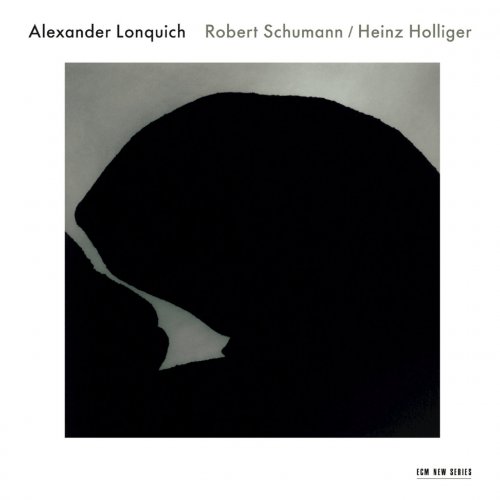
Alexander Lonquich - Robert Schumann, Heinz Holliger (2011)
BAND/ARTIST: Alexander Lonquich
- Title: Robert Schumann, Heinz Holliger
- Year Of Release: 2011
- Label: ECM New Series
- Genre: Classical
- Quality: FLAC (tracks)
- Total Time: 01:11:49
- Total Size: 224 Mb
- WebSite: Album Preview
Tracklist:
Robert Schumann - Kreisleriana op. 16 (First Edition, 1838)
1. I Äußerst bewegt 02:02
2. II Sehr innig und nicht zu rasch - Intermezzo I. Sehr lebhaft - Erstes Tempo - Intermezzo II. Etwas bewegter - Langsamer 08:27
3. III Sehr aufgeregt - Etwas langsamer - Erstes Tempo
05:02
4. IV Sehr langsam - Bewegter - Erstes Tempo 04:34
5. V Sehr lebhaft 03:11
6. VI Sehr langsam - Etwas bewegter - Erstes Tempo 06:08
7. VII Sehr rasch - Noch schneller - Etwas langsamer
02:03
8. VIII Schnell und spielend 03:15
Heinz Holliger - Partita (1999)
9. I Praeludium ('Innere Stimme') 05:19
10. II Fuga 07:12
11. III Barcarola 03:23
12. IV Sphynxen für Sch. (Intermezzo I) 02:49
13. V Petit 'Csárdás obstiné' 01:21
14. VI Sphynxen für Sch. (Intermezzo II) 03:13
15. VII Ciacona monoritmica 13:50
Performers:
Alexander Lonquich, Piano
Robert Schumann - Kreisleriana op. 16 (First Edition, 1838)
1. I Äußerst bewegt 02:02
2. II Sehr innig und nicht zu rasch - Intermezzo I. Sehr lebhaft - Erstes Tempo - Intermezzo II. Etwas bewegter - Langsamer 08:27
3. III Sehr aufgeregt - Etwas langsamer - Erstes Tempo
05:02
4. IV Sehr langsam - Bewegter - Erstes Tempo 04:34
5. V Sehr lebhaft 03:11
6. VI Sehr langsam - Etwas bewegter - Erstes Tempo 06:08
7. VII Sehr rasch - Noch schneller - Etwas langsamer
02:03
8. VIII Schnell und spielend 03:15
Heinz Holliger - Partita (1999)
9. I Praeludium ('Innere Stimme') 05:19
10. II Fuga 07:12
11. III Barcarola 03:23
12. IV Sphynxen für Sch. (Intermezzo I) 02:49
13. V Petit 'Csárdás obstiné' 01:21
14. VI Sphynxen für Sch. (Intermezzo II) 03:13
15. VII Ciacona monoritmica 13:50
Performers:
Alexander Lonquich, Piano
Robert Schumann does not seem a likely candidate for the avant-garde-oriented ECM label, but the apparent intent of pianist Alexander Lonquich and producer/impresario Manfred Eicher is to present a new combination of contemporary music with established repertoire. The Partita of Swiss composer Heinz Holliger (better known as an oboist) does indeed make reference to Schumann, among other composers: two of the work's movements are entitled "Sphynxen [Sphinxes] for Sch.," and a third, "Barcarola," seems loosely inspired by the dedicatee of Schumann's Kreisleriana, Fryderyk Chopin. More generally, the largely modern language of Holliger's Partita seems to take off from the wild extremes of emotion and technique in Kreisleriana, a work inspired by a recurring character in the fiction of E.T.A. Hoffmann, and develop them into passages of extended pianistic technique. The connection is persuasive, even if the performance of Kreisleriana (in its original 1838 version) is a bit on the chilly side, and the Holliger work is more oriented toward Baroque models than toward Schumann: the tension between those Baroque models and the Holliger work's extremity is attractive, and would have been attractive to Schumann himself. ECM's sound is superb as usual, and seems an integral part of the project.
As a ISRA.CLOUD's PREMIUM member you will have the following benefits:
- Unlimited high speed downloads
- Download directly without waiting time
- Unlimited parallel downloads
- Support for download accelerators
- No advertising
- Resume broken downloads


